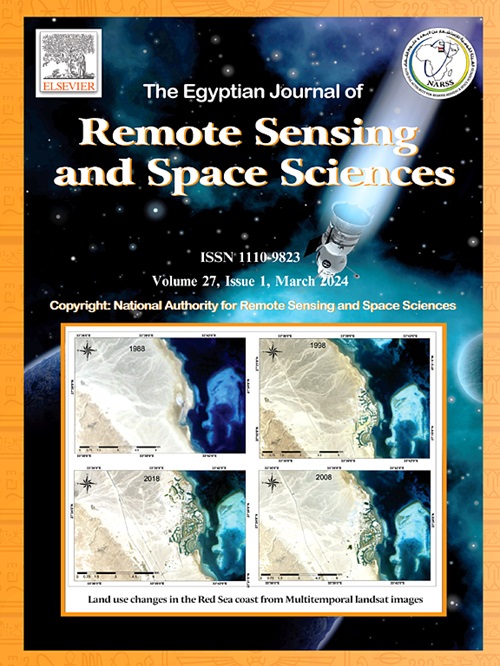UAV-based agricultural spraying: A study on spiral movements and pesticide optimization
IF 4.1
3区 地球科学
Q2 ENVIRONMENTAL SCIENCES
Egyptian Journal of Remote Sensing and Space Sciences
Pub Date : 2025-09-17
DOI:10.1016/j.ejrs.2025.09.001
引用次数: 0
Abstract
Unmanned aerial vehicles (UAVs) have become an essential component of precision agriculture, providing enhanced accuracy and operational efficiency in pesticide application. This study presents an innovative spraying protocol that integrates spiral flight trajectories with volumetric classification of olive trees, enhancing operational performance while reducing environmental impact. Using high-resolution UAV imagery in conjunction with advanced image processing, trees were categorized into small, medium, and large canopy-volume classes. For each group, optimized spiral patterns with predefined turn counts and flight altitudes were assigned to achieve uniform droplet deposition across complex canopy structures. Field experiments conducted in the Hekimhan district of Malatya, Türkiye, demonstrated an 85 % improvement in spraying efficiency, a 15 % reduction in chemical usage, and a 20 % decrease in operational time compared with conventional methods. The proposed approach significantly improved targeting precision and minimized off-target drift. These results clearly indicate that the proposed protocol is scalable, environmentally sustainable, and operationally efficient for pesticide application in orchards and other tree-based agricultural systems.This approach demonstrates considerable potential for widespread adoption in precision agriculture, offering a replicable and adaptable framework for enhancing the efficiency and sustainability of pesticide application in diverse orchard systems.
基于无人机的农业喷洒:螺旋运动与农药优化研究
无人机(uav)已成为精准农业的重要组成部分,为农药施用提供了更高的准确性和操作效率。本研究提出了一种创新的喷雾方案,将螺旋飞行轨迹与橄榄树的体积分类相结合,提高了操作性能,同时减少了对环境的影响。利用高分辨率无人机图像结合先进的图像处理,将树木分为小、中、大树冠体积类。对于每一组,优化的螺旋模式与预定义的转弯数和飞行高度分配,以实现均匀的液滴沉积在复杂的冠层结构。在吉尔吉斯斯坦共和国马拉提亚的Hekimhan地区进行的实地试验表明,与传统方法相比,喷洒效率提高了85%,化学品使用量减少了15%,作业时间减少了20%。该方法显著提高了瞄准精度,减小了偏离目标漂移。这些结果清楚地表明,所提出的协议具有可扩展性、环境可持续性和操作效率,适用于果园和其他基于树木的农业系统的农药施用。这种方法在精准农业中具有广泛应用的巨大潜力,为提高不同果园系统中农药施用的效率和可持续性提供了可复制和适应性的框架。
本文章由计算机程序翻译,如有差异,请以英文原文为准。
求助全文
约1分钟内获得全文
求助全文
来源期刊
CiteScore
8.10
自引率
0.00%
发文量
85
审稿时长
48 weeks
期刊介绍:
The Egyptian Journal of Remote Sensing and Space Sciences (EJRS) encompasses a comprehensive range of topics within Remote Sensing, Geographic Information Systems (GIS), planetary geology, and space technology development, including theories, applications, and modeling. EJRS aims to disseminate high-quality, peer-reviewed research focusing on the advancement of remote sensing and GIS technologies and their practical applications for effective planning, sustainable development, and environmental resource conservation. The journal particularly welcomes innovative papers with broad scientific appeal.

 求助内容:
求助内容: 应助结果提醒方式:
应助结果提醒方式:


